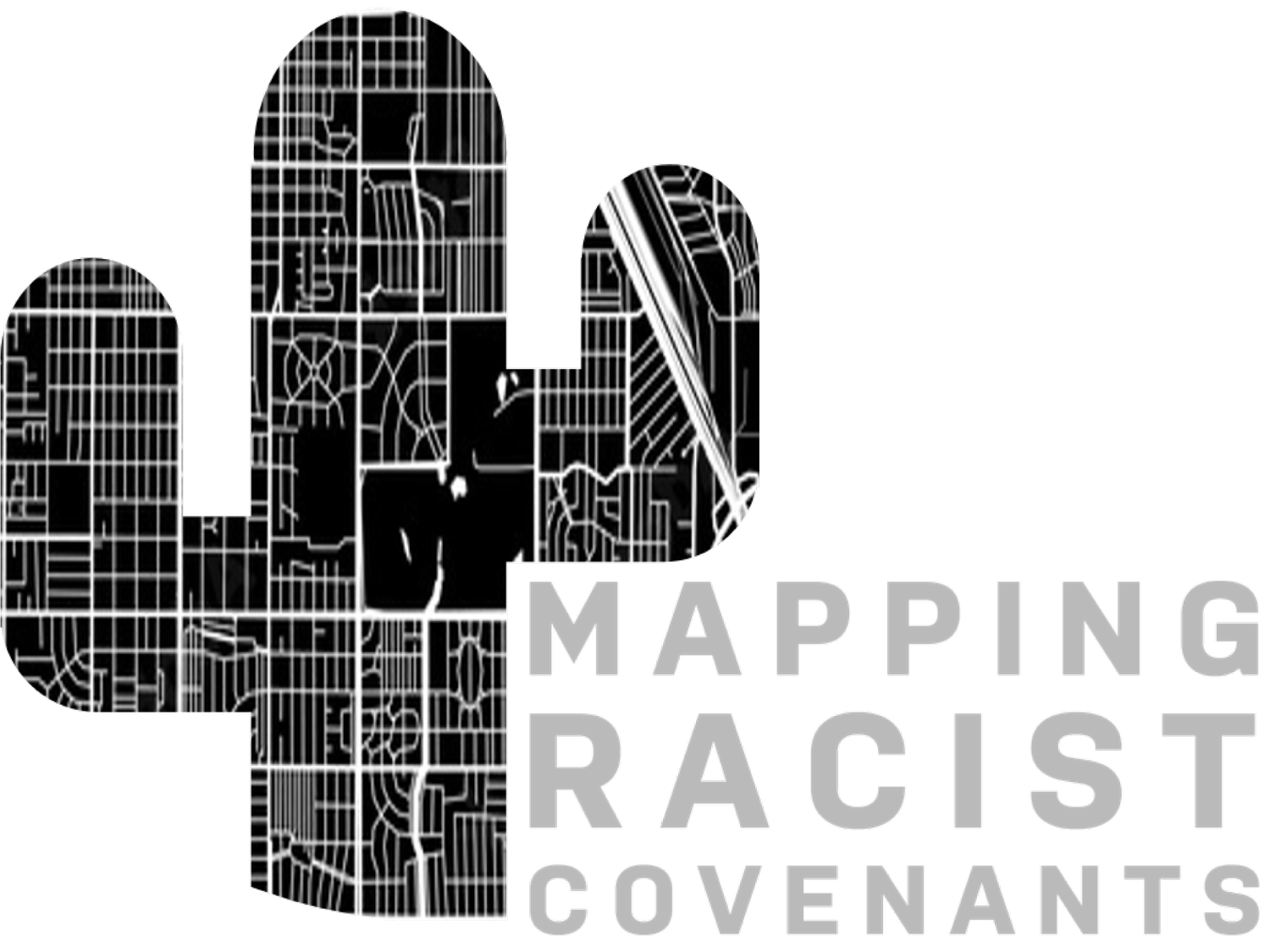Explore Our Interactive Racist Covenants Map
About the Map
The Mapping Racist Covenants (MRC) project tells the story of racist covenants across neighborhoods and subdivisions in Tucson, focusing on those enacted between 1912-1968. If you reference MRC data or content, please cite as follows:
Jason R. Jurjevich, Yoga Korgaonkar, Chris Kollen, Liz Wilshin, and Claire Holloway. 2023. Mapping Racist Covenants. Tucson, AZ. https://mappingracistcovenants.org/
As with any research project, there are limitations that should be considered when interpreting the analysis. We encourage you to consider the following:
Race/Ethnicity. Our analysis reveals that 20 different racial/ethnic terms were used in CCRs during the 1912-1968 period to exclude people of color from living in certain Tucson subdivisions and neighborhoods. Many of these terms are racist and ableist slurs, and therefore may be difficult or triggering for some individuals. Users should 1) engage with the information critically and with sensitivity to the experiences of those who have been historically marginalized and, 2) exercise great care when interpreting these terms given their place in a complex history of oppression and exclusion (e.g., codifying the “one-drop rule,” referencing “perceptible strains” of certain races, and other racist language).
Completeness. Racist covenants, conditions, and restrictions (CCRs) are a largely unexplored form of institutional housing discrimination, in part because of the challenges associated with historic documents: the typeface is difficult to read, most documents are not digitized (i.e., non-searchable), the documents are stored in multiple databases (e.g., Bargain and Sale Deeds, Property Restrictions), and the data need to be geocoded. Despite our best efforts to collect all racist CCRs in subdivisions across Tucson, we likely missed some subdivisions. If your subdivision is excluded, please contact us.
Oral Histories of Discrimination. CCR data do not provide a complete account of housing discrimination in Tucson, and therefore, at a minimum, should be interpreted alongside oral histories and other data. For example, the CCRs for the Colonia Solana Neighborhood of Tucson, enacted in 1928, restricted properties being “sold, conveyed, rented, or leased in whole or in part, to any person of African or Asiatic descent; or to any person not of the White or Caucasian race.” Although the CCR does not reference Jewish people, Stanley Feldman, former Chief Justice of the Arizona Supreme Court, recounts the discrimination that he and his family experienced: the Feldman’s were asked by their neighbors to remove their name from their mailbox “because it might lead other people to believe that it was OK for Jewish people to move” into the Colonia Solana neighborhood.
Subdivisions and Individual Parcels. This analysis of CCRs covers subdivisions, not individual parcels, because most CCRs in Tucson are subdivision-specific. Deed restrictions can also be recorded for an individual property, however. In the Menlo Park Neighborhood in Tucson, for example, a Bargain and Sale deed from 1916 for 203 N. Grande Avenue includes a racist covenant preventing the home from being sold to Black/African American individuals (see National Register of Historic Places, Menlo Park*). Future research should explore the prevalence of racist CCRs for individual parcels in Tucson.
Spatial Data. The spatial dataset used in this analysis is a subdivision polygon layer obtained from Pima County. Areas of the map without any polygons may indicate individual parcels not developed as part of a subdivision, vacant/natural spaces as well as non-residential areas (e.g., Davis-Monthan Air Force Base and city parks).
Unable to Locate. The subdivisions labeled as “Unable to Locate” do not have CCRs filed or indexed with the Pima County Recorder's Office. Many of these subdivisions cover older parts of Tucson (see the areas in and around Downtown Tucson) that were developed before CCRs were widely enacted. The absence of CCRs in these areas does not mean that these areas were free of housing discrimination.
*Special thanks to Greg Smith of the Menlo Park Neighborhood Association for sending us this document.

